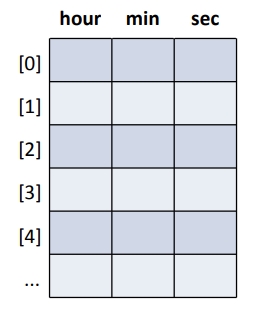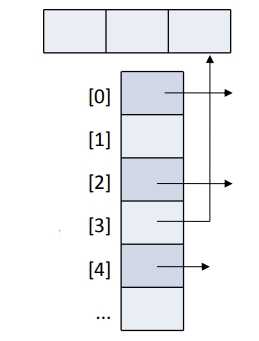C++对象的动态建立与释放 C++中对象的动态建立与释放详解及其作用介绍
我是小白呀 人气:0想了解C++中对象的动态建立与释放详解及其作用介绍的相关内容吗,我是小白呀在本文为您仔细讲解C++对象的动态建立与释放的相关知识和一些Code实例,欢迎阅读和指正,我们先划重点:C++对象的动态建立,C++对象的动态释放,下面大家一起来学习吧。
概述
通过对象的动态建立和释放, 我们可以提高内存空间的利用率.

对象的动态的建立和释放
new 运算符: 动态地分配内存
delete 运算符: 释放内存
当我们用new运算符动态地分配内存后, 将返回一个指向新对象的指针的值. 我们可以通过这个地址来访问对象. 例如:
int main() {
Time *pt1 = new Time(8, 8, 8);
pt1 -> show_time();
delete pt1; // 释放对象
return 0;
}
输出结果:
8:8:8
当我们不再需要由 new 建立的对象时, 用 delete 运算符释放.
案例
Box 类:
#ifndef PROJECT1_BOX_H
#define PROJECT1_BOX_H
class Box {
public:
// 成员对象
double length;
double width;
double height;
// 成员函数
Box(); // 无参构造
Box(double h, double w, double l); // 有参有参构造
~Box(); // 析构函数
double volume() const; // 常成员函数
};
#endif //PROJECT1_BOX_H
Box.cpp:
#include <iostream>
#include "Box.h"
using namespace std;
Box::Box() : height(-1), width(-1), length(-1) {}
Box::Box(double h, double w, double l) : height(h), width(w), length(l) {
cout << "========调用构造函数========\n";
}
double Box::volume() const{
return (height * width * length);
}
Box::~Box() {
cout << "========调用析构函数========\n";
}
main:
#include "Box.h"
#include <iostream>
using namespace std;
int main() {
Box *pt = new Box(16, 12, 10); // 创建指针pt指向Box对象
cout << "长:" << pt->length << "\t";
cout << "宽:" << pt->width << "\t";
cout << "高:" << pt->height << endl;
cout << "体积:" << pt->volume() << endl;
delete pt; // 释放空间
return 0;
}
输出结果:
========调用构造函数========
长:10 宽:12 高:16
体积:1920
========调用析构函数========
对象数组 vs 指针数组
对象数组
固定大小的数组:
const int N = 100; Time t[N];
动态数组:
const int n = 3; // 定义数组个数 Time *pt = new Time[n]; // 定义指针指向数组 delete []pt; // 释放空间

指针数组
建立占用空间小的指针数组可以帮助我们灵活处理常用空间大的对象集合. (拿时间换空间)
举个栗子:
int main() {
const int n = 3;
Time *t[n] = {nullptr};
if (t[0] == nullptr){
t[0] = new Time(8, 8, 8);
}
if (t[1] == nullptr){
t[1] = new Time(6, 6, 6);
}
t[0] -> show_time();
t[1] -> show_time();
return 0;
}

加载全部内容